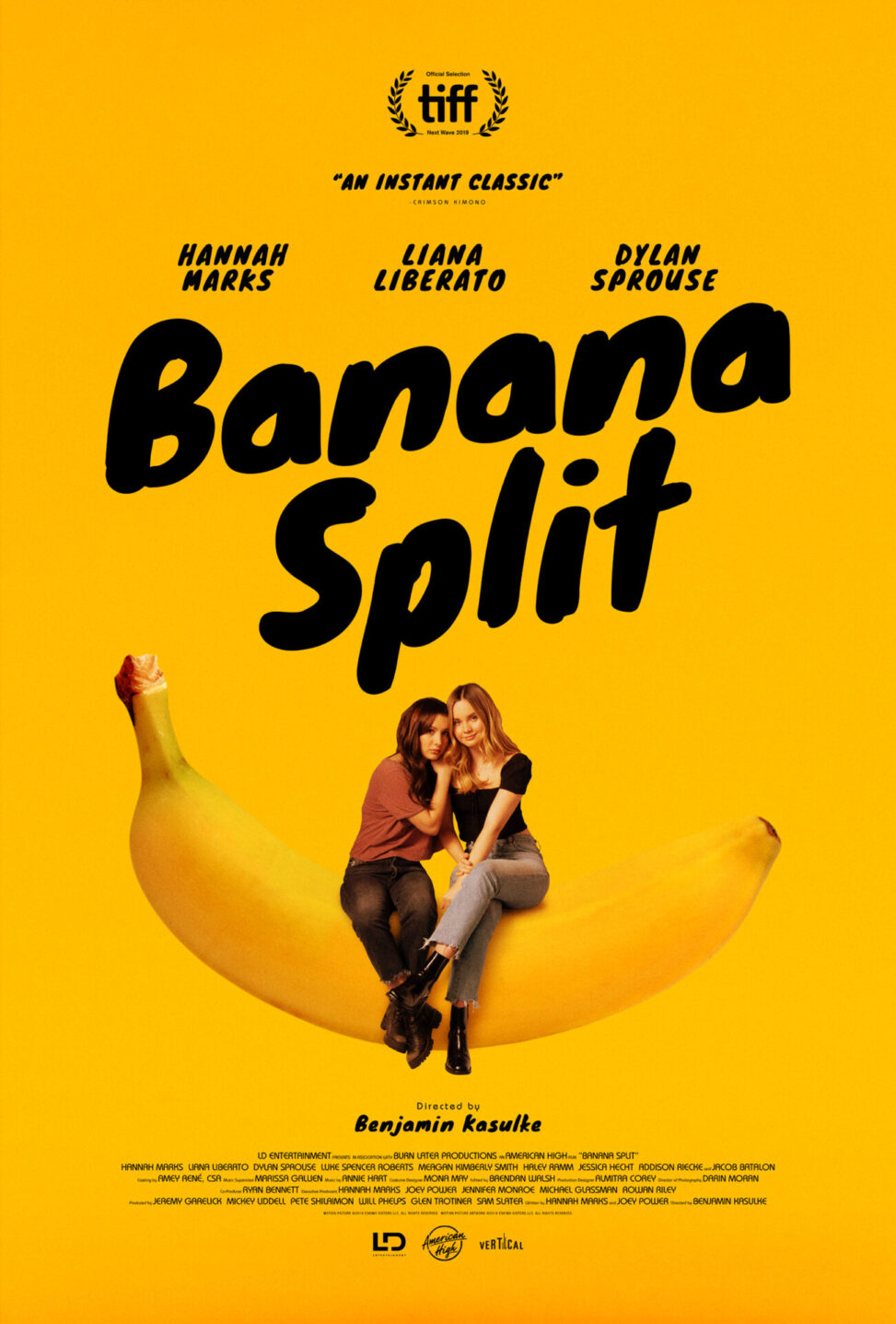Title: Banana Split
Released: March 27, 2020
Produced by: Benjamin Kasulke
Access on: Netflix
Netflix Summary: Despite leaving for college, a heartsick teen tries to build a new friendship with a kindred spirit even though she’s dating her ex-boyfriend.
Gaze Theory: This film is another example of a movie that does not utilize gaze theory. The teenagers in the film are sexualized but the women are not objectified as gaze theory necessitates. Immediately at the beginning of the film, a teenage couple is shown having multitudes of sex in public places. These scenes depict children as sexual beings which, although may be true, sexualizes them. The couple depicted Nick and April break up because they plan on going to different colleges. Soon after, Nick starts seeing a girl named Clara. Despite the awkward situation, Clara and April become very close friends. Clara’s character is very sexualized. In one scene of the movie, Clara lists off her sexual partners, all of fourteen. Her character is meant to be seen as a sexual being; including her relationship with Nick which is almost purely sexual. While listening to the people she has slept with, a nude photo of them pops across the screen. In this case, the men she slept with are extremely objectified in the sense that they are not a character but rather an object on a list.
Sex Role Theory: Despite the various sexual undertones, this film takes a progressive turn at the end. Instead of a happy ending where Nick and April get back together or Clara and Nick fall in love, neither of the girls end up with Nick. The friendship between Clara and April is so strong that they choose each other. This gives a feminist tone to the movie because the two women stick together. Neither are portrayed as boy-crazy or smitten with love. They each have goals and aspirations outside of finding a man to validate them.
Effects: Although this movie is provocative and sexual in some scenes, the overall effect is not objectification. I believe that the message may cause teenagers to oversexualize themselves but maybe in a more respectful way. The two female leads are portrayed as strong and confident. Rather than worrying about boys, they are more focused on their goals and being friends despite their awkward history. The ending of the movie also plays a large role in setting a feminist tone. The audience expects one of the girls to fall in love and end up with Nick; however, when neither of them do it isn’t disappointing. In fact, it is more satisfying that the two remained friends. This also leaves a message for young girls that love is not the only important thing in life. A sense of satisfaction can be found without male validation.
Shared by: Olivia Smidel
Image Credit: https://www.imdb.com/title/tt7755856/
